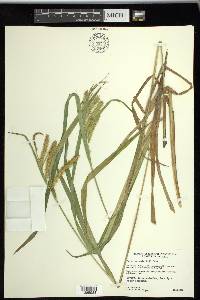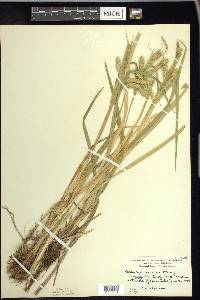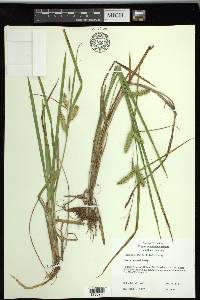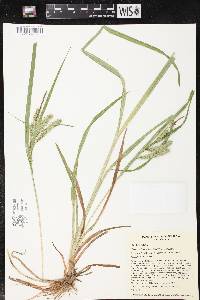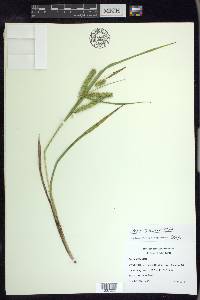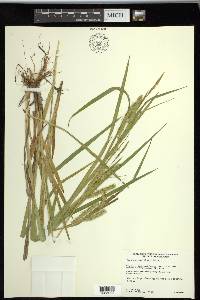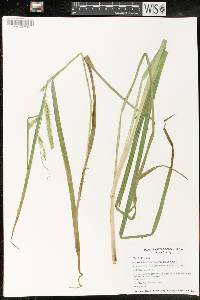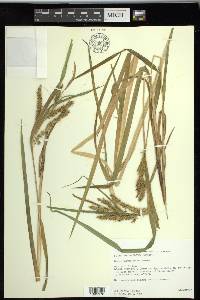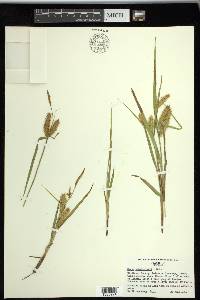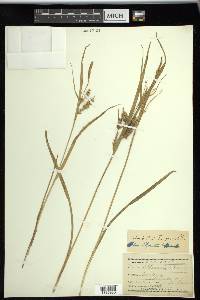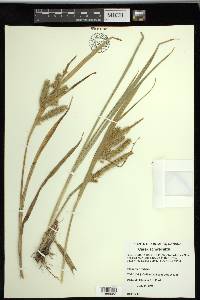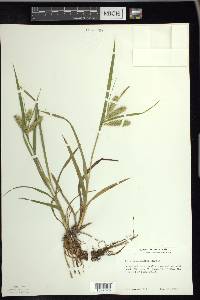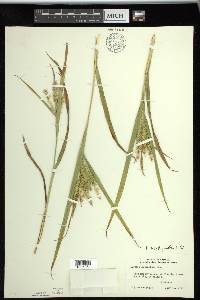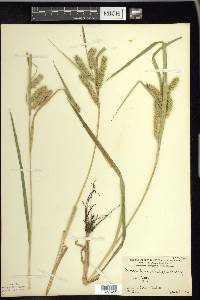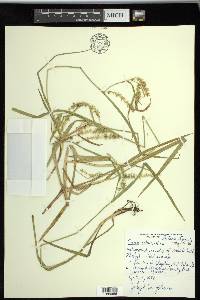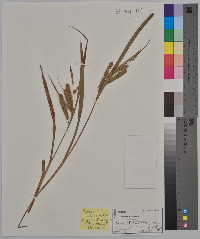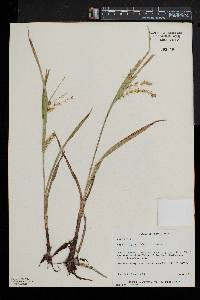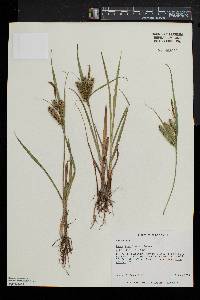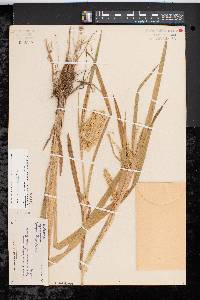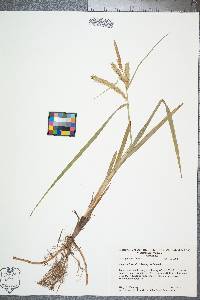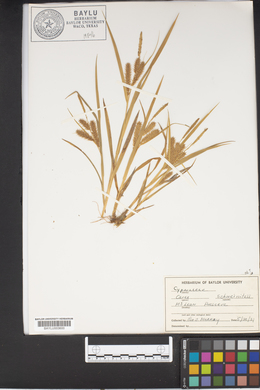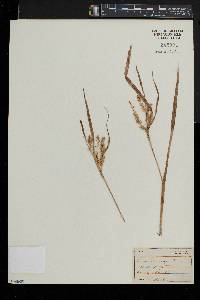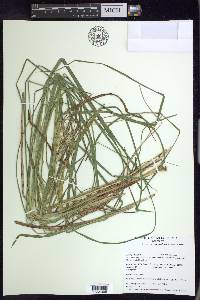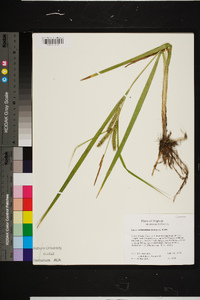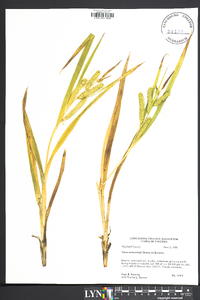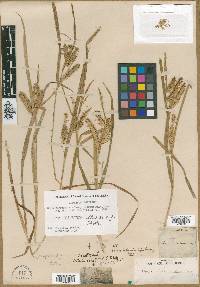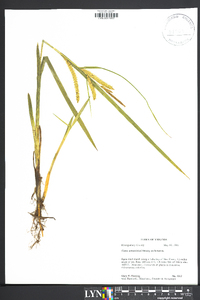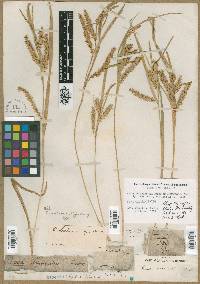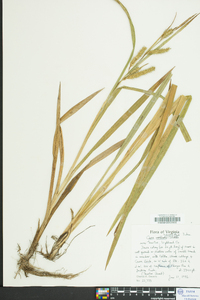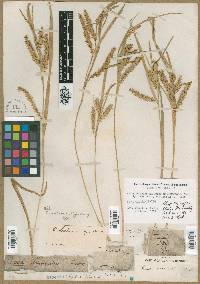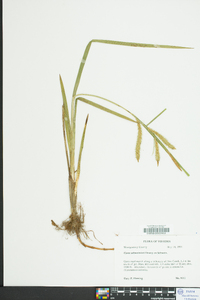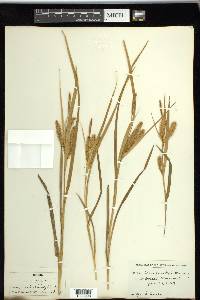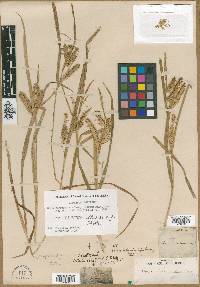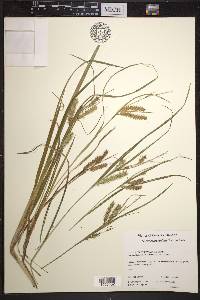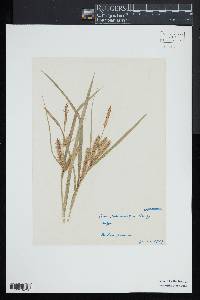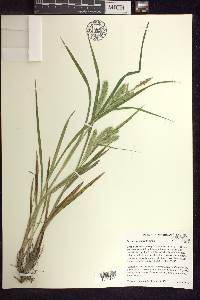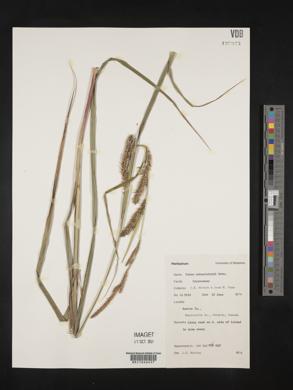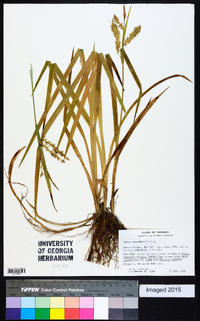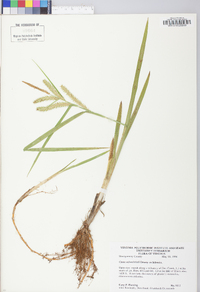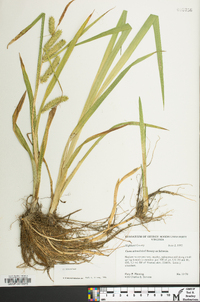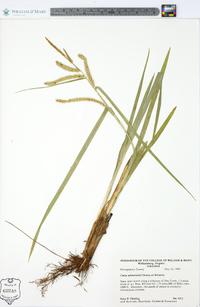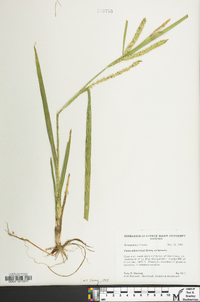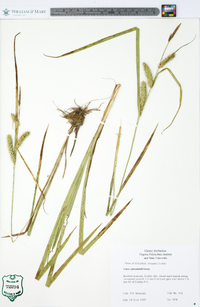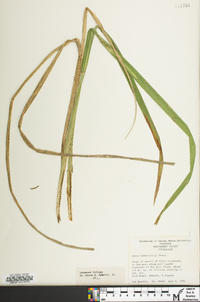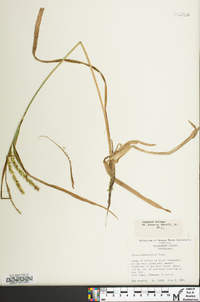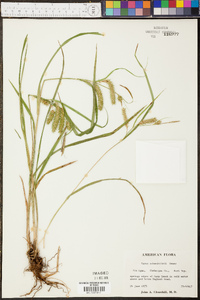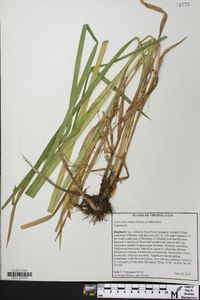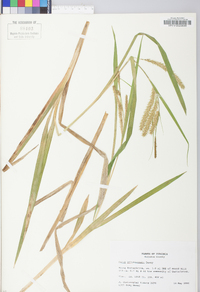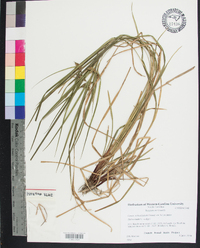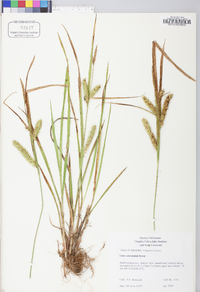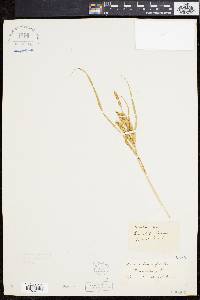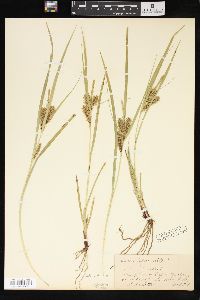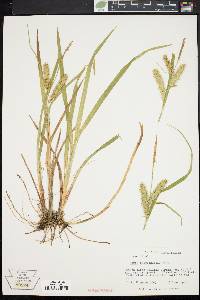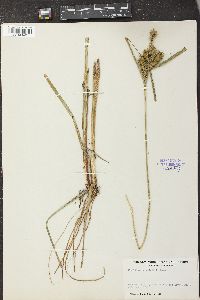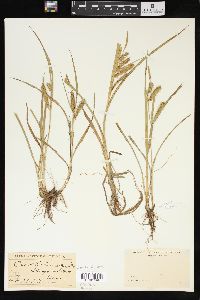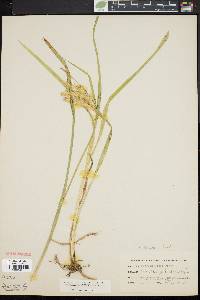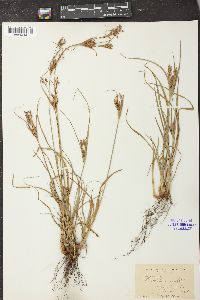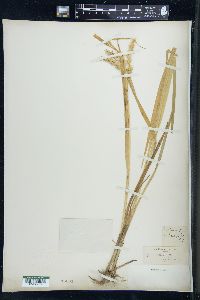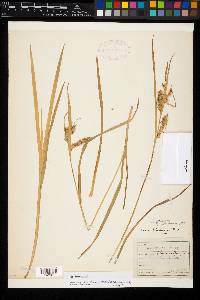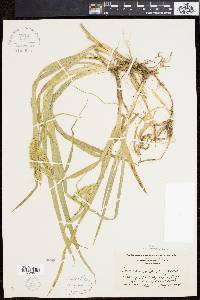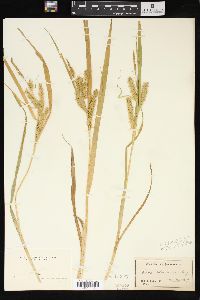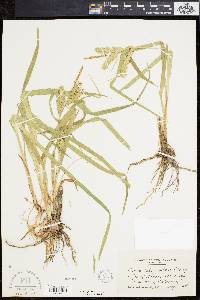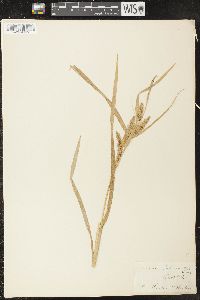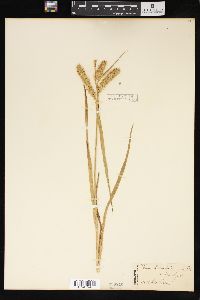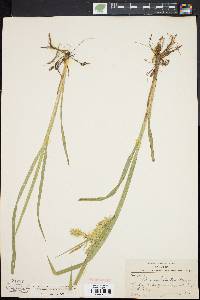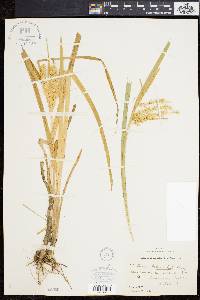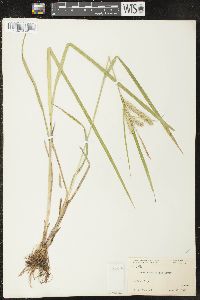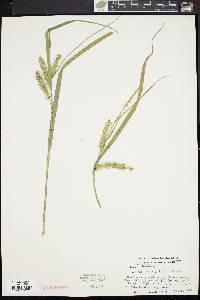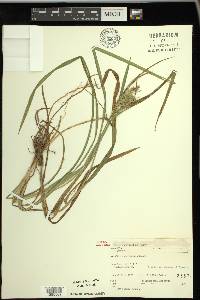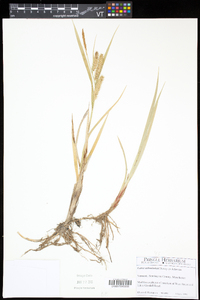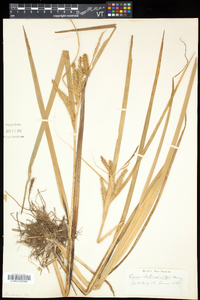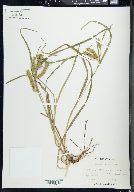Carex schweinitzii
|
|
|
|
Family: Cyperaceae
Schweinitz's Sedge
|
Plants extensively colonial; rhizomes long. Culms trigonous in cross section, 18-65 cm, smooth distally. Leaves: basal sheaths pale brown; ligules as wide to wider than long; blades pale to mid green, flat to W-shaped, 4-11 mm wide, glabrous. Inflorescences 8-24 cm; proximal bract 11-37 cm, exceeding inflorescence; proximal 2-4 spikes pistillate, erect or often the proximal ascending to spreading; terminal 1(-2) spikes staminate. Pistillate scales lanceolate-acuminate, 2.4-6.9 × 0.3-0.9 mm, shorter than or the proximal longer than perigynia, margins serrulate-ciliate, apex with prominent scabrous awn. Staminate scales acute to acuminate, smooth except at tip. Perigynia ascending, 7-11-veined, narrowly elliptic, 4.2-7 × 1.3-1.8 mm, apex tapered; beak 1.4-2.4 mm, bidentulate, smooth, teeth straight, 0.2-0.5 mm. Stigmas 3. Achenes pale brown, trigonous, smooth. Fruiting Jun-Jul. Shallow cold streams, springheads, seeps, margins of fens, and seepy stream, pond, and lakeshores in open or lightly shaded sites, in highly calcareous soils; 100-600 m; Ont.; Conn., Mass., Mich., Mo., N.Y., Pa., Vt., Va., Wis. Carex schweinitzii is very local and uncommon but often forms large colonies where present. It hybridizes occasionally with C. hystericina. The single, old Missouri collection (G. Yatskievych 1999+) seems so far disjunct as to suggest that there may have been a label mixup.
Stems 3-7 dm, aphyllopodic, sharply triangular, arising singly or few together from slender rhizomes; lvs septate-nodulose, mostly 4-10 mm wide, very rough distally; terminal spike staminate, slender-pedunculate, usually with a conspicuous bract or smaller sessile spike some distance below, the scales acute or cuspidate; pistillate spikes 2-5, approximate or the lowest widely separate, cylindric, 3-8 נ1-1.5 cm, the lowest spreading or ascending and distinctly peduncled, the upper ascending to erect, short-peduncled to subsessile; lower bracts lf-like, ±strongly sheathing at base, much surpassing the infl; pistillate scales with small, entire, hyaline or brown-tinged body, the midvein excurrent into a rough awn often equaling or surpassing the perigynium; perigynia spreading or ascending, 5.5-7.2 mm, substipitate, ovoid, inflated, with 7-9 slender nerves, abruptly narrowed to a slender beak with erect or spreading teeth 0.4-1 mm; achene loosely enveloped, concavely trigonous, with a persistent flexuous style. Cool, shady streambanks; rare; Vt. to n. Mich., s. to N.J., N.C., Tenn., and Mo. Gleason, Henry A. & Cronquist, Arthur J. 1991. Manual of vascular plants of northeastern United States and adjacent Canada. lxxv + 910 pp. ©The New York Botanical Garden. All rights reserved. Used by permission. |


